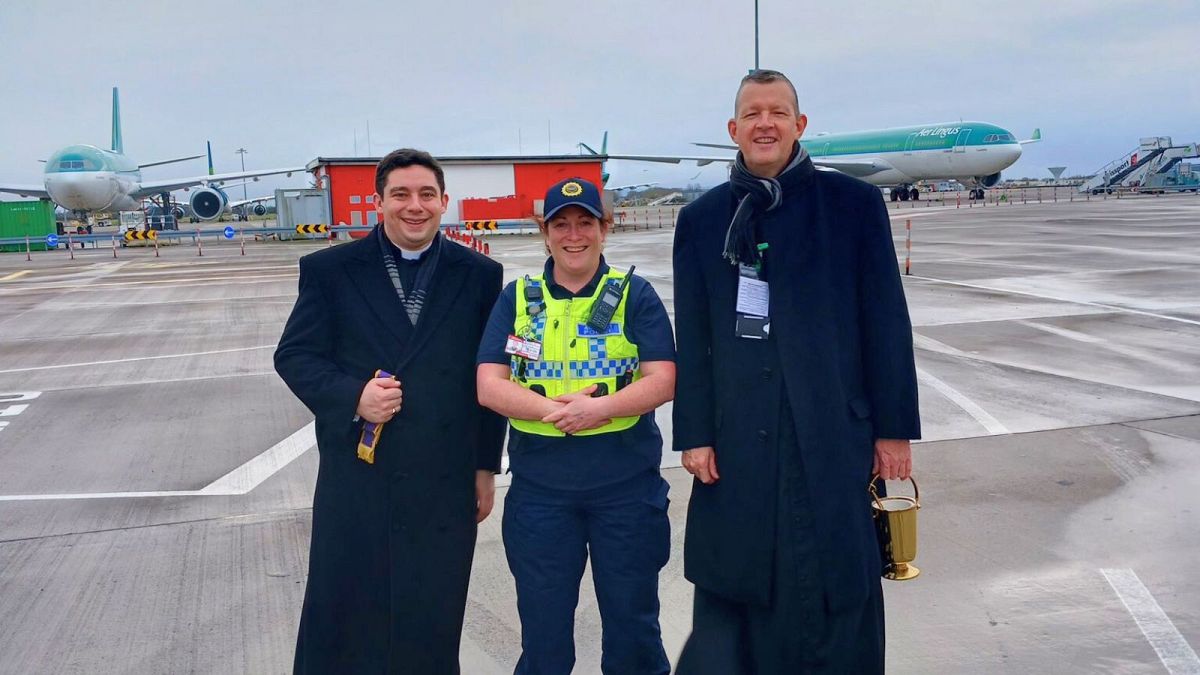Every Christmas Day for the last 76 years, a priest has taken a chalice of water onto the quiet airfield at Dublin Airport and blessed the planes.
But that tradition is up in the air due to new security protocols at the busy international hub.
“Due to recent changes to security protocols, airside access is now restricted to airport operations only,” a spokesperson for DAA, the airport’s operator, tells Euronews Travel.
“For this reason, non-operational activities can no longer be facilitated airside. We are currently working on a new approach to facilitating the traditional Christmas blessing of the planes at Dublin Airport.”
The airport set the record straight on X (formerly Twitter) after a report that the change was in response to a secular campaigner requesting to hold a non-religious blessing.
The campaigner - John Hamill, a former officer at advocacy group Atheist Ireland - appears not to have accepted that explanation, however.
“This had happened for 75 years, yet apropos of nothing they realised it was a security hazard, coincidentally just two weeks after someone else asked to join the priests,” he wrote on X.
How did Dublin’s plane-blessing tradition start?
Dublin Airport’s Catholic plane-blessing ceremony dates back to summer 1947. It originally just involved flag carrier Aer Lingus aircraft, which are named after Christian saints from Ireland.
Back then the skies were considerably quieter over Dublin. As traffic picked up, the event moved in 1967 to Christmas Day: the only day of the year that the airport closes.
A massive 32 million people passed through Dublin Airport’s terminals last year. But on 25 December, just a skeleton staff remained - airport chaplain Father Desmond “Des” Doyle among them.
Budget airline Ryanair’s planes are now included in the ceremony too. But there’s far too many vehicles on the runway for each plane to get individual attention.
Instead, DAA spokesman Graeme McQueen told media last year, the priest carries out a general blessing from the airfield. “The annual blessing these days is ecumenical and covers the general fleet,” McQueen told CNN.
Dublin Airport is currently assessing how the ceremony can go ahead in 2024, in light of the new airside protocols mandated by its regulator, the Irish Aviation Authority (IAA).
IAA has been contacted for comment about the security changes.
How else do airports make room for religion?
Father Doyle is the chaplain in residence at the airport’s church, Our Lady Queen of Heaven, located between the two terminals. Like most airports, Dublin also has a multi faith prayer room.
These 24/7 rooms are important spaces for prayer and meditation, as people embark on journeys or pray for their loved ones.
Many airlines provide for their passengers’ religious needs too. In particular, some big Middle Eastern airliners - Saudi, for example - have dedicated areas for their Muslim passengers to pray on board.
Others, like Qatar Airways, inform people of the direction of Mecca via their screens, aiding their prayers. And they recite a prayer (shown on all screens) prior to departure.
As for plane blessings, the tradition wings its way back to 1920 - soon after the first non-stop transatlantic flight.
The Vatican’s Congregation of Sacred Rites approved the blessing of an aeroplane which “connects aviation to different spiritual truths,” Catholic news site Aleteia explains.
In three parts, the blessing prays that the plane “foster in the souls of all the faithful who travel in it a longing for the things above”; calls for the protection of the Virgin Mary; and asks for a guardian angel to “escort” the plane safely.


